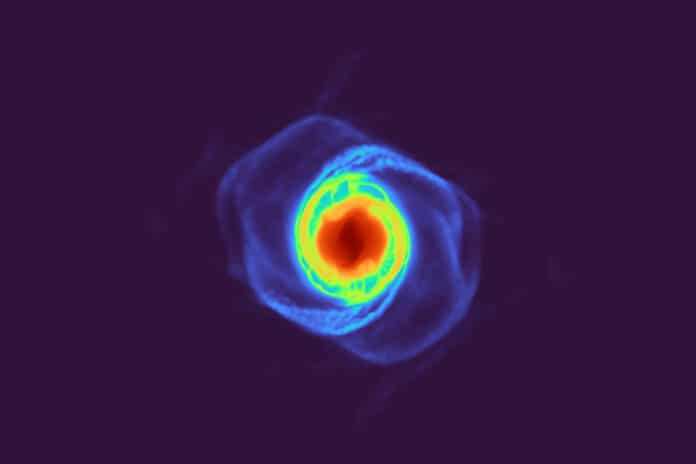Neptune-sized planets exhibit a wide range of compositions and densities, depending on factors related to their formation and evolution history, such as the distance from their host stars and atmospheric escape processes. They can vary from relatively low-density planets with thick hydrogen–helium atmospheres to higher ones.
A new study, led by Luca Naponiello of the University of Rome Tor Vergata, reported about a Neptune-sized planet denser than steel. The planet TOI-1853 b’s composition is believed to have resulted from a giant planetary clash.
The mass of this planet is almost twice that of any other similar-sized planet known, and its density is incredibly high. It signifies that the planet is made of a larger fraction of rock than would typically be expected at that scale.
According to scientists, this is the result of planetary collisions. The collision removed some lighter atmosphere and water, leaving many rocks behind.
This planet proves that massive impacts are frequently involved in planet formation across the galaxy. This finding contributes to the link between solar system-based theories of planet creation and exoplanet formation. This extreme planet’s discovery offers fresh perspectives on creating and developing planetary systems.
Postgraduate student and co-author Jingyao Dou said: “This planet is very surprising! Usually, we expect planets forming with this much rock to become gas giants like Jupiter, which have densities similar to water.”
“TOI-1853b is the size of Neptune but has a density higher than steel. Our work shows that this can happen if the planet experiences extremely energetic planet-planet collisions during its formation.”
“These collisions stripped away some of the lighter atmosphere and water, leaving a substantially rock-enriched, high-density planet.”
Senior Research Associate and co-author Dr. Phil Carter from the University of Bristol’s School of Physics, explained, “Our contribution to the study was to model extreme giant impacts that could potentially remove the lighter atmosphere and water/ice from the original larger planet to produce the extreme density measured.”
“We found that the initial planetary body would likely have needed to be water-rich and suffer an extreme giant impact at a speed of greater than 75 km/s to produce TOI-1853b as it is observed.”
Scientists are planning detailed follow-up observations of TOI-1853b to attempt to detect any residual atmosphere and examine its composition.
Associate Professor and co-author Dr Zoë Leinhardt concluded: “We had not previously investigated such extreme giant impacts as they are not something we had expected. Much work must be done to improve the material models that underlie our simulations and extend the range of extreme giant impacts modeled.”
Journal Reference:
- Naponiello, L., Mancini, L., Rossetti, A., et al. A super-massive Neptune-sized planet. Nature. DOI: 10.1038/s41586-023-06499-2
